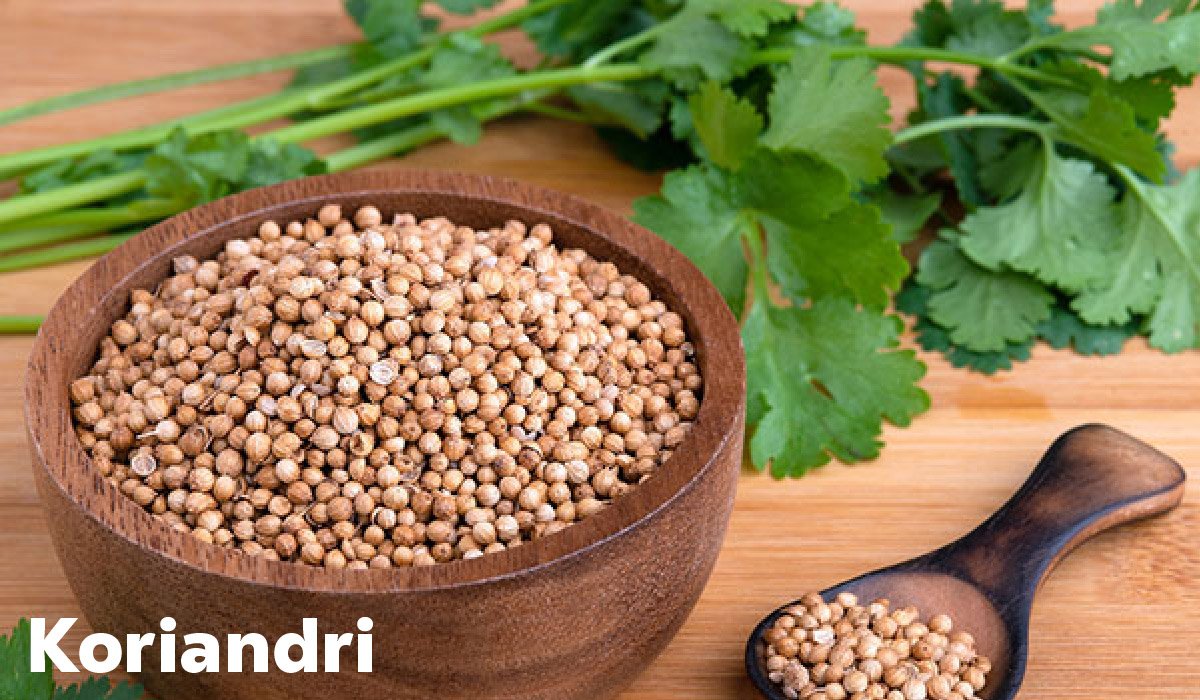Blog
Koriandri Benefits & Uses: The Powerful Herb Your Kitchen Needs

What Is Koriandri?
Koriandri isn’t just an herb—it’s a cultural icon, a flavor bomb, and a health booster used and loved across the globe. Known scientifically as Coriandrum sativum, koriandri is a plant that produces both fresh leaves and seeds, offering two distinct but equally treasured flavor profiles. In different parts of the world, the name “korian dri” refers to either or both parts of the plant: the bright, citrusy leaves commonly known as cilantro, and the warm, earthy seeds known as coriander.
This dual nature gives it an incredibly wide range of culinary applications. Used in cuisines from India to Mexico, the Middle East to Southeast Asia, korian dri is more than a garnish—it’s a foundational herb that enhances dishes, promotes health, and connects generations of cooks through flavor and tradition.
In this article, we explore every facet of koriandri: its historical significance, botanical classification, nutritional richness, health benefits, culinary uses, growing tips, and more. Whether you’re a home cook, a herbal enthusiast, or a cultural explorer, understanding koriandri will enrich your knowledge and your kitchen alike.
The Rich History and Origins of Koriandri
Koriandri’s journey through human civilization spans thousands of years, making it one of the oldest known herbs still in popular use today. Archaeological evidence reveals that coriander seeds were discovered in ancient Egyptian tombs, including that of Pharaoh Tutankhamun, indicating that korian dri was valued not just for cooking, but also for ceremonial and medicinal purposes. In ancient Greece and Rome, koriandri was frequently mentioned in medicinal texts and was commonly used in perfumery, ointments, and food flavoring.
It even made its way into medieval European apothecaries, where it was prescribed to ease digestive issues and enhance mood. In Indian Ayurvedic medicine, korian dri has long been revered for its cooling properties and was believed to balance bodily energies. As trade routes expanded through the Silk Road and maritime exchanges, korian dri spread rapidly across continents. It became a key component of Asian, Middle Eastern, and Latin American cuisine, and continues to hold cultural and culinary importance around the world.
Botanical Profile and Scientific Classification
Koriandri belongs to the Apiaceae family, commonly known as the carrot or parsley family, and its botanical name is Coriandrum sativum. It is an annual herbaceous plant that completes its lifecycle in one growing season. What makes korian dri botanically unique is that every part of the plant is edible and serves a different culinary or medicinal purpose. The leaves—commonly called cilantro—are flat, green, and delicate with a refreshing citrusy aroma.
The seeds, which are round and brown when dried, are known as coriander and have a distinctly nutty, warm flavor. The stems are also edible and packed with flavor, often used in stocks, chutneys, or blended sauces. Koriandri flowers bloom in small, white or pale pink umbels, eventually forming the seeds. This plant typically grows to a height of 1 to 3 feet and prefers well-drained soil and plenty of sunlight. Its fast-growing nature and ability to thrive in varied climates make it ideal for both home gardeners and large-scale agriculture.
Koriandri’s Nutritional Profile
Koriandri is a powerhouse of nutrition packed into a low-calorie package. A 100-gram serving of fresh coriander leaves offers only about 23 kcal but delivers a significant amount of daily recommended nutrients. It’s exceptionally rich in vitamin K (310 mcg), which plays a crucial role in blood clotting and bone health. It also provides generous amounts of vitamin A (135% of daily needs), known for supporting eye health and immune function, and vitamin C (45% of daily value), a vital antioxidant that boosts immunity and collagen production.
Additionally, koriandri leaves contain iron, magnesium, potassium, and calcium, making it a mineral-rich herb that supports overall vitality. The seeds, on the other hand, are high in dietary fiber, protein, and potent essential oils like linalool and limonene, which are responsible for their distinctive aroma and therapeutic effects. These bioactive compounds contribute to korian dri’s medicinal properties and elevate it from a mere seasoning to a valuable functional food.
Health Benefits of Koriandri – Backed by Science
The health benefits of koriandri are extensive and well-documented in both traditional medicine and modern science. One of its most renowned benefits is its ability to aid digestion. Korian dri seeds stimulate digestive enzymes and gastric juices, making them an excellent remedy for bloating, nausea, and indigestion. In Ayurvedic practices, coriander tea is often prescribed to improve gut health. Beyond digestion, korian dri plays a role in regulating blood sugar levels. Studies have shown that extracts from korian dri seeds can promote insulin activity, making it potentially useful for people managing type 2 diabetes.
In terms of heart health, koriandri helps lower bad cholesterol (LDL) and triglycerides while increasing good cholesterol (HDL), thanks to its antioxidant and lipid-regulating properties. It’s also a strong immune booster, packed with vitamins and antimicrobial compounds that fight infections. Furthermore, korian dri acts as a natural detoxifier, particularly in helping to eliminate heavy metals like lead and mercury from the body.
For skin health, its anti-inflammatory and antibacterial qualities make it effective against acne and other skin irritations. Lastly, compounds like linalool have been studied for their potential to enhance memory, reduce stress, and protect brain cells, giving koriandri cognitive and mood-lifting potential.
Culinary Uses of Koriandri Around the World
Koriandri holds a cherished place in the culinary traditions of many cultures. In Indian cuisine, its fresh leaves are used in chutneys, dals, and curries, while the seeds form an essential part of spice blends such as garam masala and sambhar powder. In the Middle East, koriandri is a star in dishes like falafel, tabbouleh, and kebabs, where it adds freshness and complexity. In Mexican and Latin American kitchens, fresh koriandri—known locally as cilantro—is a key ingredient in salsas, guacamole, and tacos, lending its zesty profile to balance spicy and rich flavors.
In Thai and Vietnamese dishes, koriandri is used both as a garnish and within curry pastes, broths, and noodle soups like pho. Western chefs have adopted korian dri in innovative ways—cilantro aiolis, coriander-spiced bread, or herbed marinades for grilled meats. The versatility of korian dri makes it a flavor bridge that unites diverse ingredients and elevates everyday dishes into gourmet experiences.
Cilantro vs Koriandri vs Coriander – What’s the Difference?
The terminology around koriandri can be confusing, especially when comparing “cilantro” and “coriander.” All three refer to the same plant—Coriandrum sativum—but different parts and regional dialects influence the name. In American English, “cilantro” refers specifically to the fresh green leaves, while “coriander” refers to the dried seeds. In contrast, many other countries, especially in South Asia, simply call the whole plant “koriandri” or “dhania.”
The flavor difference is significant: cilantro leaves offer a bright, citrusy, and slightly peppery punch, whereas coriander seeds have a warm, nutty, and mildly spicy profile. Understanding this distinction allows for better use in recipes—cilantro is typically added at the end of cooking or used fresh to maintain its delicate aroma, while coriander seeds are often toasted and ground to deepen their earthy notes.
How to Use Koriandri in Everyday Cooking
Integrating koriandri into your meals is both easy and rewarding. Use fresh leaves as a garnish over soups, lentils, rice, or tacos to instantly uplift the dish. Finely chop them into green sauces, chutneys, or dips for a burst of flavor. Korian dri leaves also blend well into salad dressings and yogurt-based dips like raita. For a more complex, deep taste, use dried seeds or ground powder—toast them briefly to unlock their oils and mix into stews, marinades, or baking recipes.
Don’t shy away from creative uses either: add fresh koriandri to green smoothies, herb butters, or even lemonade for a refreshing twist. Brew a warm coriander seed tea to soothe digestion or infuse oil with crushed seeds for a flavorful cooking base. The herb’s versatility makes it suitable for everyday dishes as well as gourmet experimentation.
Growing Koriandri at Home – A Beginner’s Guide
Growing koriandri at home offers the satisfaction of fresh herbs at your fingertips. This herb thrives in full sun to partial shade and prefers well-drained, nutrient-rich soil. It’s best to sow the seeds directly into the soil because the plant doesn’t respond well to transplanting. Keep the soil consistently moist but not waterlogged.
Within 3–4 weeks, you can begin harvesting the tender leaves, and after about 3 months, you can collect the seeds once the flowers dry out. For indoor growing, place the pot on a sunny windowsill and trim regularly to encourage new leaf growth. Korian dri is a fast grower, which means you can enjoy multiple harvests throughout the season, giving you a constant supply of fresh herbs for your meals.
Storage Tips and Shelf Life
Proper storage of koriandri ensures maximum freshness and flavor. For fresh leaves, wrap them loosely in a damp paper towel and store them inside a zip-lock bag in the refrigerator. Alternatively, place the stems in a glass of water and cover the top loosely with a plastic bag to prolong shelf life. For longer-term use, freeze the leaves in herb ice cubes or store chopped leaves in olive oil to retain their flavor. Coriander seeds should be stored in an airtight container, away from direct sunlight and moisture. When stored properly, seeds can last up to a year without losing their potency. Ground coriander, however, should be used within a few months for best results.
Challenges and Controversies
Despite its popularity, koriandri is not without its critics. One of the most unusual controversies is the “soapy taste” that some people experience when eating fresh leaves. This is due to a genetic variation in the OR6A2 gene, which causes around 10% of people to perceive coriander’s aldehyde compounds as soapy or unpleasant. Another concern is the use of pesticides in commercial farming. To avoid chemical residue, many recommend buying organic koriandri or growing your own. Additionally, drying or freezing korian dri leaves can reduce their flavor and aroma, making storage and transport a challenge for chefs and consumers alike.
Cultural and Religious Symbolism of Koriandri
Koriandri holds a deep cultural and spiritual significance in many parts of the world. In India, it is often used in religious rituals and is considered a symbol of health and prosperity. It is also an important element in Ayurvedic medicine, where it is used to balance body energies (doshas). In European folklore, coriander was once believed to be a key ingredient in love potions, adding to its mystical reputation. Today, its presence in traditional dishes across cultures underscores its enduring role not just in taste, but in identity and ritual.
Economic and Global Market Significance
The global trade of koriandri is a significant part of the spice and herb industry. India is the largest producer and exporter of coriander seeds, followed by countries like Morocco, Egypt, and Mexico. With the rising demand for organic spices, koriandri has seen increased cultivation under sustainable farming practices. Its affordability, ease of growth, and wide usage make it an important cash crop for small-scale farmers and exporters alike. As global interest in ethnic and health-conscious cuisine grows, korian dri continues to be a high-demand product in both fresh and dried forms.
Koriandri in Modern Wellness Trends
In recent years, koriandri has found a renewed spotlight in wellness circles. It’s included in detox drinks, herbal teas, and superfood smoothies. Nutritionists recommend korian dri-infused water for hydration and cleansing, while wellness coaches incorporate coriander oil in aromatherapy for its calming effects. Skincare brands are now formulating natural products using coriander extracts to address inflammation and skin irritation. In plant-based and vegan diets, koriandri offers flavor depth and nutritional value, making it a popular herb for those pursuing holistic health and sustainable eating.
Future Outlook – Why Koriandri Will Keep Thriving
The future of koriandri is bright, driven by consumer trends that favor organic produce, global flavors, and functional foods. As more people shift toward plant-based diets and eco-conscious consumption, herbs like koriandri are expected to see increased demand. Scientific research into its medicinal properties continues to grow, opening doors for its use in nutraceuticals, pharmaceuticals, and even cosmeceuticals. Additionally, korian dri’s sustainability—its ability to grow quickly, use fewer resources, and enhance soil health—makes it a promising crop in the face of global agricultural challenges.
Final Thoughts
Koriandri is more than just a kitchen herb—it is a flavorful, nutrient-rich, and culturally significant plant with a rich legacy and a dynamic future. Its vibrant leaves and aromatic seeds offer an unparalleled combination of taste and health benefits. From ancient Egyptian tombs to modern kitchen counters, from traditional healing to new-age detox rituals, koriandri continues to be a culinary and wellness superstar. Whether you’re garnishing a curry, brewing a healing tea, or blending a green smoothie, koriandri brings both flavor and function to your table. If you haven’t embraced this herb yet, now’s the perfect time to let koriandri transform your dishes—and your health.
FAQs
What is koriandri used for?
Koriandri is used in cooking to add fresh, citrusy flavor from its leaves and warm, nutty taste from its seeds. It’s also used in traditional medicine to help with digestion, blood sugar control, and skin health.
Is koriandri the same as cilantro and coriander?
Yes. Koriandri refers to the same plant as cilantro and coriander. The leaves are called cilantro, and the seeds are called coriander, but both come from the koriandri plant.
How do you grow koriandri at home?
To grow koriandri, plant the seeds in well-drained soil with sunlight. Keep the soil moist. Harvest the leaves after 3–4 weeks, and collect seeds after 3 months when the plant flowers and dries.
What are the health benefits of koriandri?
Koriandri is rich in vitamins A, C, and K. It helps with digestion, supports heart health, lowers blood sugar, boosts immunity, and may improve skin and brain function.
Why does koriandri taste like soap to some people?
Some people have a genetic trait (OR6A2 gene) that makes them sense a soapy flavor in koriandri leaves. This is a natural taste sensitivity and affects about 10% of the population.
For More Information Visit Coopermagazine
-

 Celebrity11 months ago
Celebrity11 months agoWho Is Jennifer Rauchet?: All You Need To Know About Pete Hegseth’s Wife
-

 Celebrity1 year ago
Celebrity1 year agoWho Is Mallory Plotnik?: The Untold Story of Phil Wickham’s Wife
-

 Celebrity1 year ago
Celebrity1 year agoWho Is Klarissa Munz: The Untold Story of Freddie Highmore’s Wife
-

 Celebrity1 year ago
Celebrity1 year agoWho Is Allison Butler?: The Life and Influence of Kirk Herbstreit Wife
















